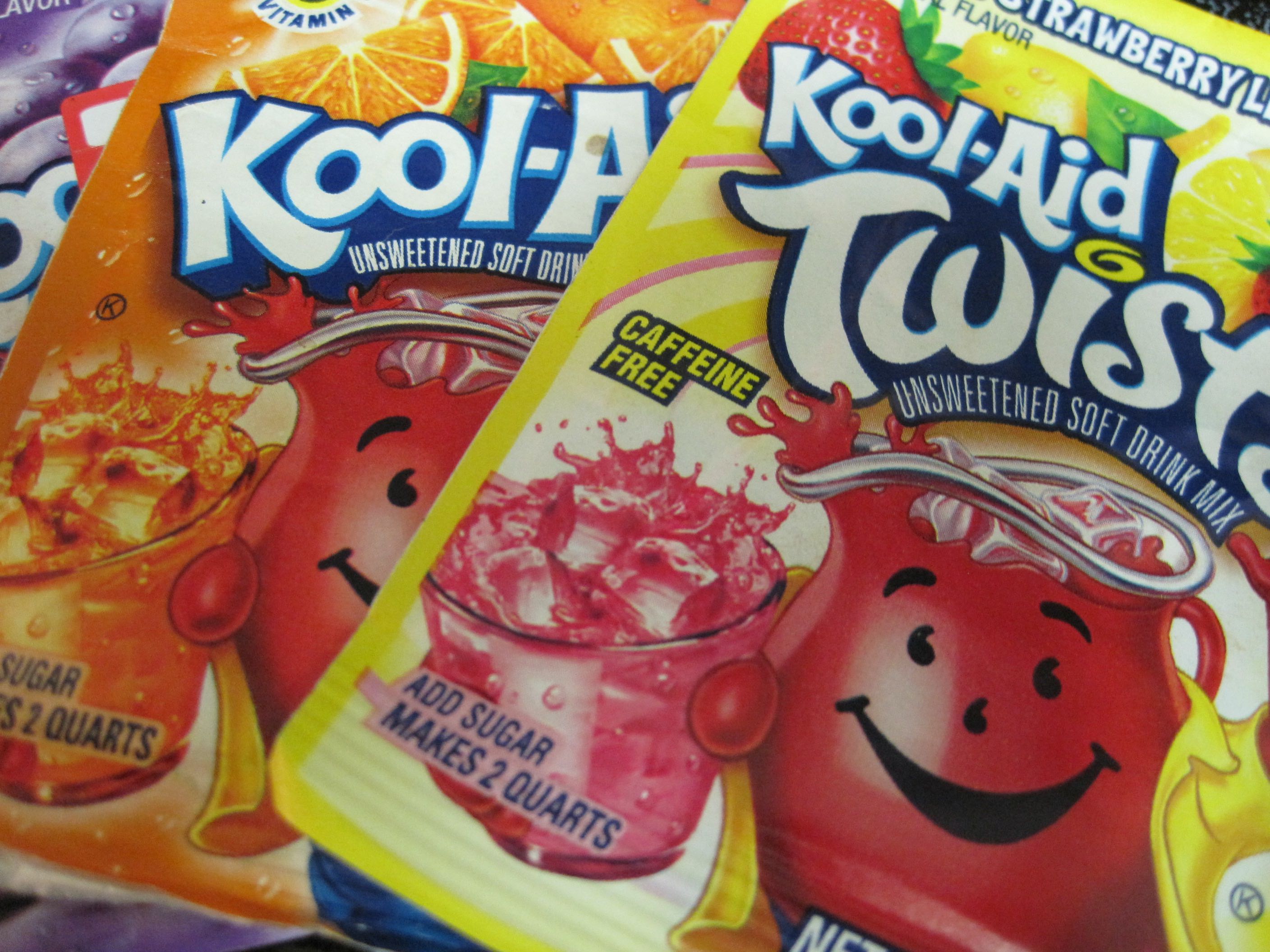
In celebration of my 4th anniversary writing for GeekMom, I present to you my very first post, published January 22, 2011:
When I was little, I remember my mother making Kool-Aid. I have old pictures of me wearing my token Kool-Aid mustache. I even had a Kool-Aid t-shirt. I remember sometimes the Kool-Aid would seem, well, watery. Did my mom dilute it on purpose? Boy, I hope she didn’t. Sometimes, I wondered if she was sneakily reducing my sugar and artificial color. I remember telling myself that when I got older, I would never dilute the Kool-Aid!
But guess what? While I do my best to make the Kool-Aid at home to the recipe, I have to admit I water down the kids’ lemonade and fruit punch at the fast-food restaurant beverage machines. It’s just instinct, I WANT to dilute!
This diluting of the Kool-Aid is now a metaphor I’ve given to the crime of watering down — or dumbing down – answers to the questions kids ask. GeekMom Jenn posted about the incessant “Why? Why? Why?” questions she receives from her kids and in her line of work. My kids do the same thing, and sometimes it grates my nerves for sure! But embedded in all of the silly mindless “Why?”s is a jewel of a question that my sons are truly curious about. And when my just-as-geeky-as-me husband or I hear such a question we want to stop and give it our full attention!
And if it’s a science or math question? Stop EVERYTHING! Break out the props!
My husband and I had a great professor in college who has such a pet peeve about “bad meteorology”, he made up a website dedicated to debunking several of the most-basic of meteorology myths. A quote he said that has stuck with my husband Dave all these years was, “Be very careful what you put into kids’ heads because it’s very hard to get it out!”. We take this very seriously with our kids.
So when our sons asked “Why is the sky blue?”, our approaches to the answer might be a little different than non-geek parents. For a pair of meteorologists with offspring, we waited for that very question with bated breath, as if it were a milestone like learning to walk or ride a bike!
In our house, though, the question ended up not “Why is the sky blue?”
It was “Why are sunsets red?”
We got it when our oldest son was about 6 1/2 years old. Definitely a corollary to the dream question! So I’m now going to share with you how we geek parents approached this subject.

We started with rainbows. Our son knew the colors of the rainbow by this point, so it was easy to explain to him how red is at one end of the rainbow, and violet is at the other.
Then we discussed the electromagnetic spectrum. Enter a basic diagram, with the shortwaves on the left, the longwaves on the right. Our son could name many of the parts of the electromagnetic spectrum, such as X-rays and microwave radiation. We explained how red light has longer wavelengths than blue or violet light.
Our firstborn started getting a little glassy-eyed here…uh oh, it doesn’t get any simpler from here!
We attempted to quickly sum up how the low sun angle at sunset allows sunlight to travel through more of the atmosphere. The color red is able to “scatter” just as readily as the color blue “scatters” when the sun is higher in the sky. When the sun is higher, most of the atmosphere’s scatterers are receptive to the color blue. This is a phenomenon called Rayleigh Scattering. I fear we might have lost our boy by this point, but it was interesting seeing how much he did pick up from the conversation.
I remember that it generated more questions about the electromagnetic spectrum and I was so impressed with having a conversation with a 6-year-old about how many things in the world around us are traveling in “invisible” waves. The music on the radio. The remote control (or the 8-billion remote controls) in our house. The microwave oven. The wireless internet in our house. The satellite television.
Check out these links for other easy-to-understand explanations of sky color.
http://spaceplace.nasa.gov/en/kids/misrsky/misr_sky.shtml
http://science.howstuffworks.com/nature/climate-weather/atmospheric/sky.htm
We, as parents, are challenged with teaching our kids the “right things”. Or at least, what we think are the “right things.” Sometimes those “right things” are contested topics such as evolution, global warming, or the causes of the Civil War. I hope to have an open enough relationship with my kids to discuss the varying viewpoints about those more controversial topics and give them the tools to form their own opinions, even if they might differ from mine.
But when it comes to math and science, I personally feel challenged to push the envelope to teach as much as I can when my kids express interest. I hope to never blow off one of their “Why?” questions, although I have to admit that can get tough at times!



